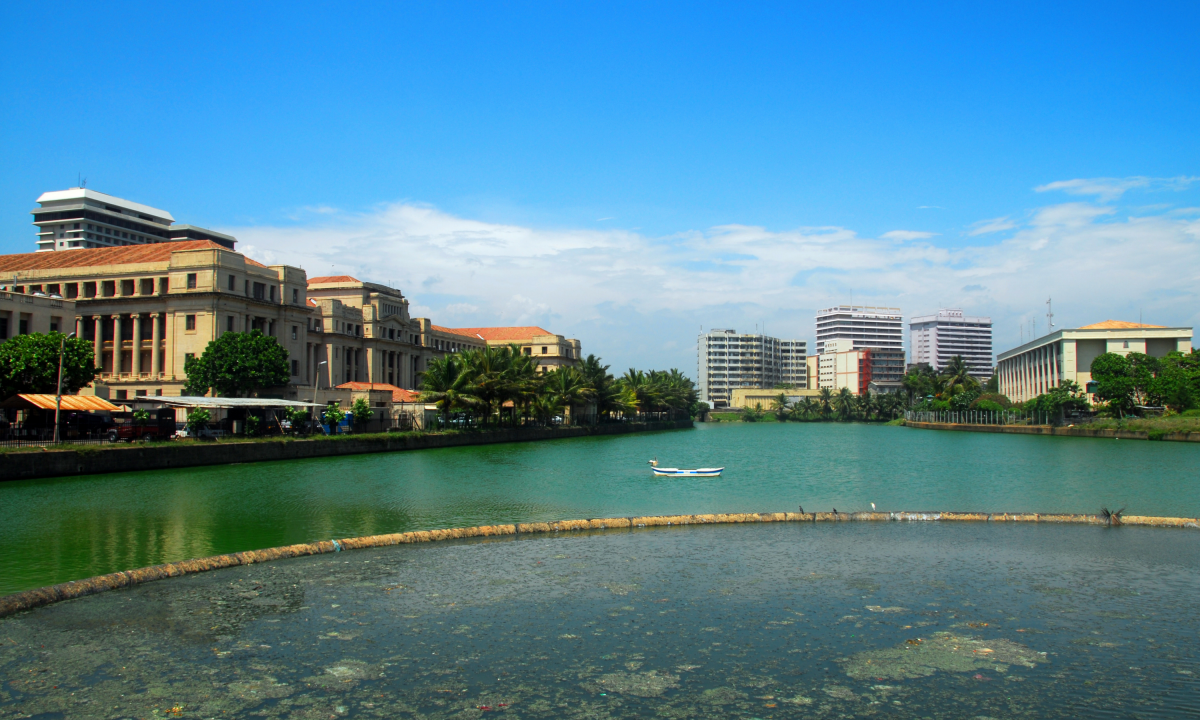The SAVi assessment on the restoration value of Beira Lake was successfully finalized in August 2019. The assessment showed that investing in restoration interventions will yield positive net results, including higher property values in the proximity of the lake. It will also improve the lake’s recreational value. The assessment found that the most cost-effective intervention is the upgrade of wastewater treatment plants to reduce nutrient loadings that reach the lake. When combined with the removal of polluted sediments through lake dredging, these interventions lead to the highest improvements in water clarity. This recognizes, however, that this combination of restoration approaches will require greater investments than focusing solely on the improvement of wastewater treatment. Notably, these interventions combined will lead to higher increases in property values and the lake’s recreational value compared to investing only into one restoration approach.
The detailed assessment report is now available here, together with a brochure summarizing the report’s key findings and methodology. The summary is also presented below.
The Scope of this SAVi Assessment
Indocean Developers (Pvt) Ltd., the project developer of the Altair building in Colombo, Sri Lanka, requested a SAVi assessment on the economic value of different options for restoring the ecological health of Beira Lake, an artificial freshwater lake located in the city centre. That assessment reveals what the restoration options would mean for the lake’s water clarity and the associated impacts on property values and recreational spending from the local population and tourists.
The SAVi assessment demonstrates that interventions devoted to restoring the ecological health of South-West Beira Lake are effective both from an environmental standpoint and also from the perspective of economic development opportunities for the city of Colombo. As the assessment considers the effectiveness and benefits of these restoration options relative to their costs over the 2020–2025 timeframe, it also highlights the varying benefit-to-cost ratios and provides evidence for prioritizing investments.
The Intervention Scenarios
The SAVi assessment considered four intervention scenarios and each rely on a set of assumptions.
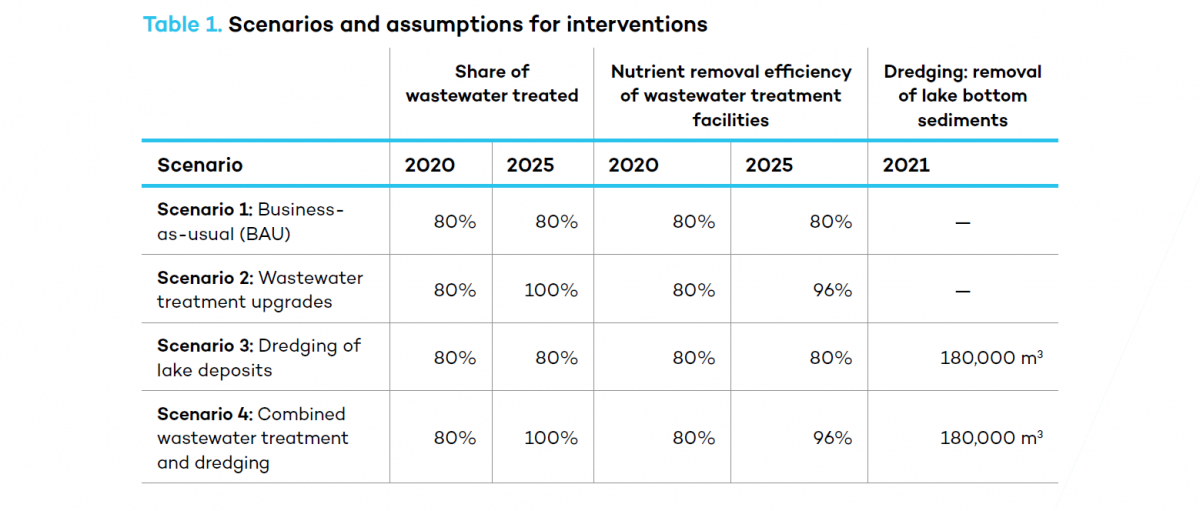
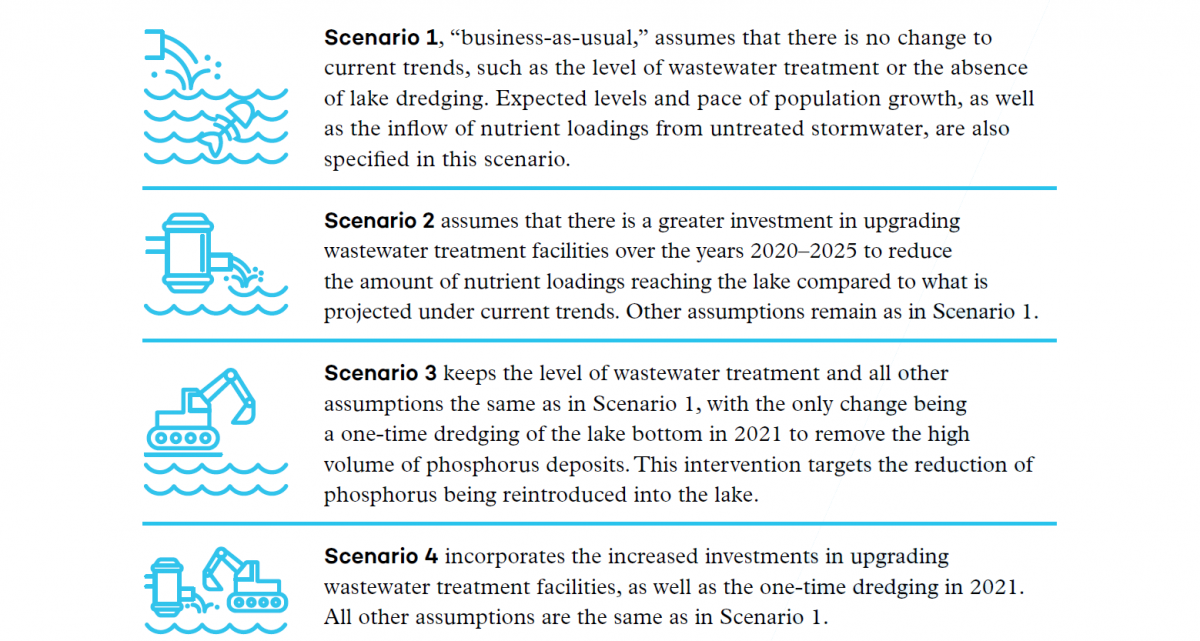
Results of the SAVi Assessment
The figure below highlights the relationship between lake water clarity improvements achieved per intervention scenario and the associated property value increases around the restored part of the lake. The combined Scenario 4 leads to by far the highest increases in property values once interventions are being implemented, whereas Scenario 2 yields only slight increases, and Scenario 3 yields even lower increases over time.
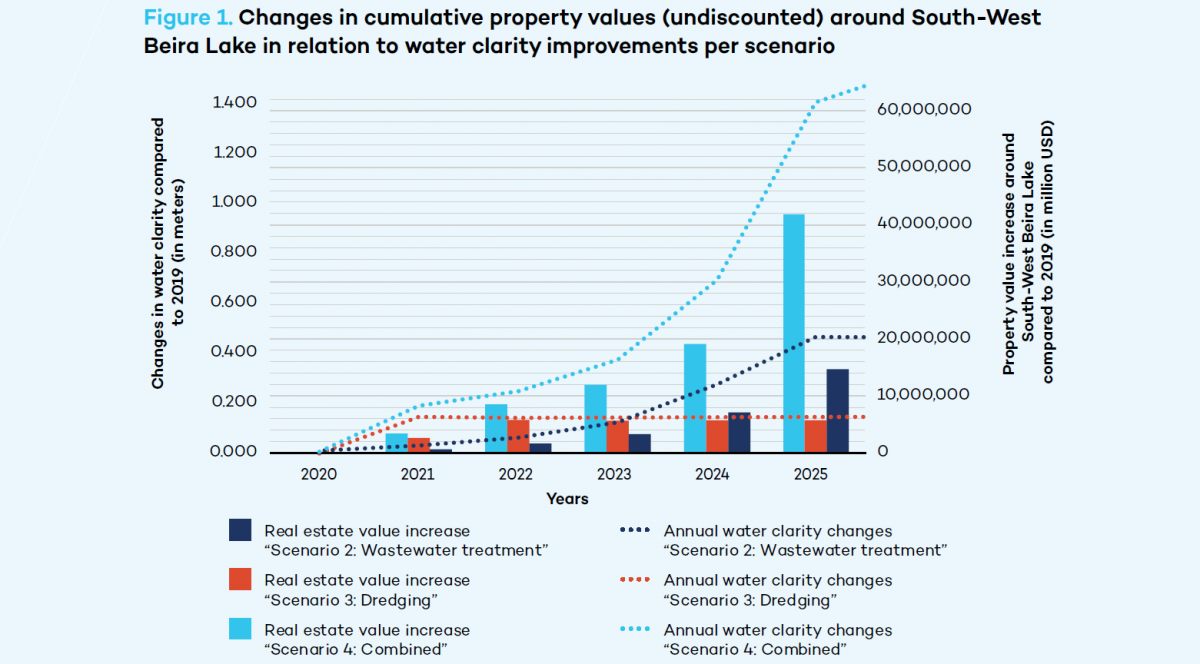
The below table indicates the cumulative additional spending for recreation from local residents and tourists visiting South-West Beira Lake when the water clarity level of 0.4 m is exceeded. In line with the above explanations on property value effects, Scenario 4 also yields by far the highest amount of cumulative additional spending for recreation between 2020 and 2025, while the other scenarios generate respectively lower spending volumes.
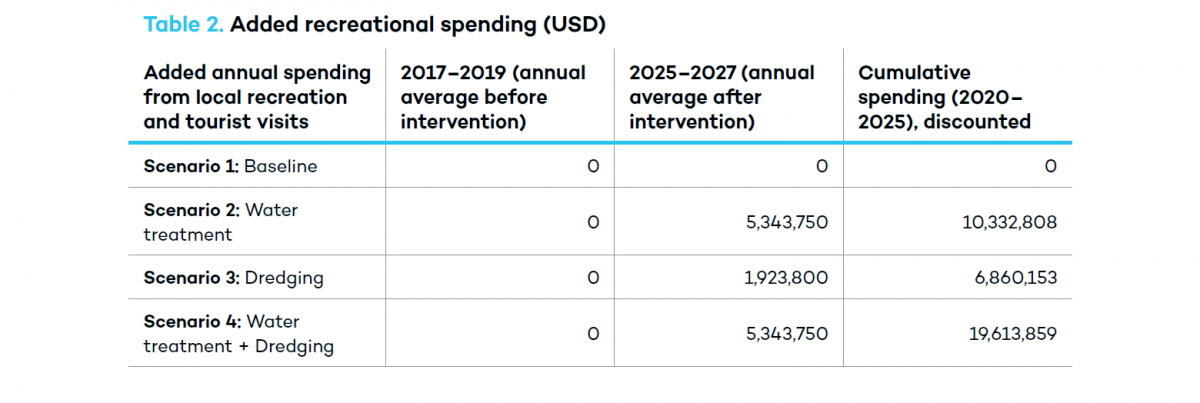
SAVi’s Integrated Cost-Benefit Analysis
The cost–benefit analysis shows that Scenario 2, involving investments into wastewater treatment upgrades, yields the highest benefits relative to the costs of implementation. Under this scenario, the benefit-to-cost ratio is 39.67—far higher than the values seen in the other three scenarios. The improvements in lake water clarity yield an increase in property values of USD 14.3 million by the end of 2025 (see Figure 1), as well as an increase in spending by locals and tourists by approximately USD 10 million over the 2020–2025 period (see Table 2).
Scenario 4 demonstrates even higher water clarity improvements and associated benefits. Property values increase by over USD 43 million by the end of 2025, and recreational spending increases over the years 2020–2025 to the tune of USD 19.5 million. The investment required for the wastewater treatment and lake dredging activities combined, however, amounts to USD 6.3 million. This is over 10 times the investment required in Scenario 2, with the benefit-to-cost ratio at 9.92.
While Scenario 4 provides the highest level of benefits, these will need to be considered against the cost of these investments, as well as the financial means available for making such investments relative to other priorities. If there are significant financial constraints, Scenario 2 may prove to be the most cost-effective option. Scenario 3 did not reach the level of benefits provided by Scenarios 2 and 4.

The results of this SAVi assessment make a strong case for investing in the restoration of South-West Beira Lake, given the positive effects on property values and the recreational value of the lake. If available financing sources are limited, prioritizing investing in the upgrade of the wastewater treatment system in the drainage area of the lake is recommended because this intervention has by far the best benefit-to-cost ratio.
